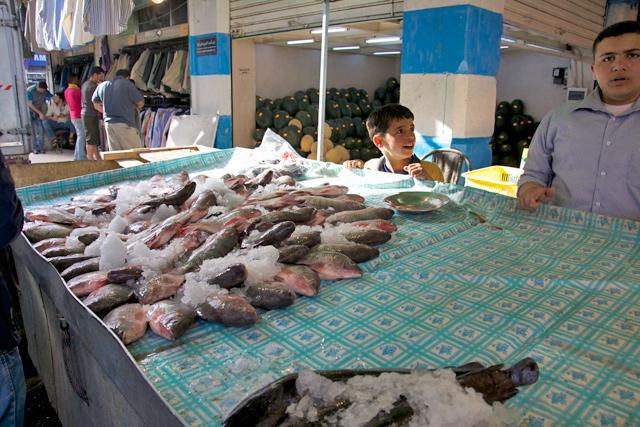You are here
Fish farms produce four times more than traditional fishers in Jordan
By Maram Kayed - May 10,2019 - Last updated at May 10,2019
AMMAN — Fish farming, which according to experts is “dominated” by the private sector, outweighs maritime fishing by almost four times the output, according to official figures.
According to a recent survey published by the Department of Statistics (DoS), fish farms produced 1,300 tonnes in 2018, while maritime fishing produced 264 tonnes.
Saeb Halsa, former head of the fishing-monitoring department with the Ministry of Agriculture, said the private sector “took over” the fish farming business after the first farm was created in 1965 by the ministry.
“At first it was introduced by the ministry, but now private companies, both Jordanian and non-Jordanian, own 99 per cent of the farms,” he said.
Halsa, who now works with a private company in the Jordan Valley, noted that fish farming can be done in “any place with enough water, which in Jordan means anywhere in Ghor, Azraq, Wadi Mujib and most of the north”.
He added: “As for maritime fishing, you only have three options, Aqaba, King Talal Dam and the River Jordan, all of which are already frequented by many fishers and are thus strained by high demand.”
Although the DoS study showed that maritime fishers catch up to 17 different kinds of fish, in contrast to the two kinds that fish farms grow, Halsa said that the latter is “still more profitable”.
Tuna makes up 45 per cent of all maritime fishing captures, with fars following at 20 per cent and sardines at 18 per cent. On the other hand, fish farms grow common carp and tilapia, respectively at 70 and 30 per cent.
Amro Khalil, current head of the fishing-monitoring department, said “fishers do not get to decide what they find in Aqaba or elsewhere. Fish farms can. Therefore, they chose the most profitable and most reproductive. That is why they [fish farms] produce more tonnes”.
Khalil also accounted for the disproportionate rates by noting that individual fishers work in “natural water bodies that have to be protected from overfishing, while farms grow them in artificial ponds”.
“We have a law that prevents farmers from using wide nets in natural waters so as to protect the environment. Although we are trying to help individual fishers, we cannot do so on account of the environment,” he explained.
Maritime fishing increased by 4 per cent in 2018, while fish farm outputs increased by more than double that at 8.5 per cent, according to the study.
Related Articles
AMMAN — The Ministry of Agriculture is looking to intensify its interests in the fish production and sales sector, hoping to create new job
AMMAN — Minister of Agriculture Mohammad Daoudiyeh recently said that assistance must be provided to the fishing industry to overcome obstac
AMMAN — Fish farming output increased by 8.5 per cent last year, a report released by the Department of Statistics said on Tuesday.

















